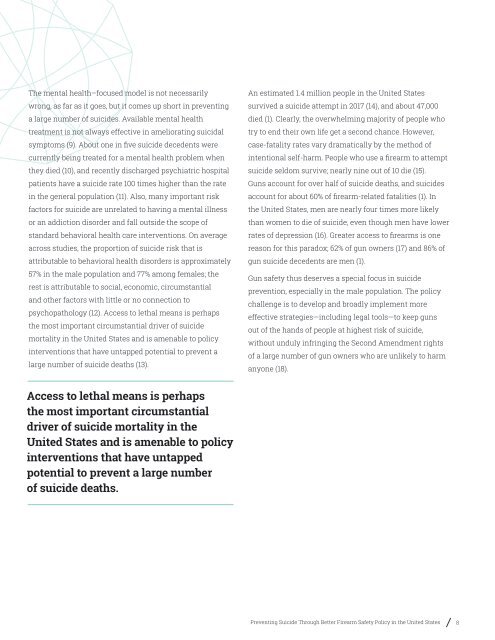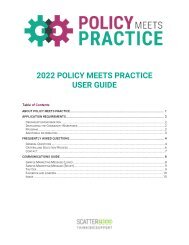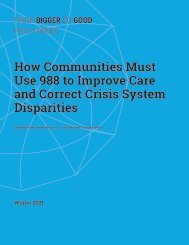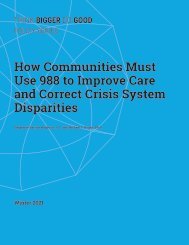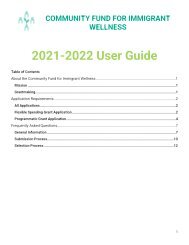PreventingSuicide_FireArmSafety_9_18_2020
You also want an ePaper? Increase the reach of your titles
YUMPU automatically turns print PDFs into web optimized ePapers that Google loves.
The mental health–focused model is not necessarily<br />
wrong, as far as it goes, but it comes up short in preventing<br />
a large number of suicides. Available mental health<br />
treatment is not always effective in ameliorating suicidal<br />
symptoms (9). About one in five suicide decedents were<br />
currently being treated for a mental health problem when<br />
they died (10), and recently discharged psychiatric hospital<br />
patients have a suicide rate 100 times higher than the rate<br />
in the general population (11). Also, many important risk<br />
factors for suicide are unrelated to having a mental illness<br />
or an addiction disorder and fall outside the scope of<br />
standard behavioral health care interventions. On average<br />
across studies, the proportion of suicide risk that is<br />
attributable to behavioral health disorders is approximately<br />
57% in the male population and 77% among females; the<br />
rest is attributable to social, economic, circumstantial<br />
and other factors with little or no connection to<br />
psychopathology (12). Access to lethal means is perhaps<br />
the most important circumstantial driver of suicide<br />
mortality in the United States and is amenable to policy<br />
interventions that have untapped potential to prevent a<br />
large number of suicide deaths (13).<br />
An estimated 1.4 million people in the United States<br />
survived a suicide attempt in 2017 (14), and about 47,000<br />
died (1). Clearly, the overwhelming majority of people who<br />
try to end their own life get a second chance. However,<br />
case-fatality rates vary dramatically by the method of<br />
intentional self-harm. People who use a firearm to attempt<br />
suicide seldom survive; nearly nine out of 10 die (15).<br />
Guns account for over half of suicide deaths, and suicides<br />
account for about 60% of firearm-related fatalities (1). In<br />
the United States, men are nearly four times more likely<br />
than women to die of suicide, even though men have lower<br />
rates of depression (16). Greater access to firearms is one<br />
reason for this paradox; 62% of gun owners (17) and 86% of<br />
gun suicide decedents are men (1).<br />
Gun safety thus deserves a special focus in suicide<br />
prevention, especially in the male population. The policy<br />
challenge is to develop and broadly implement more<br />
effective strategies—including legal tools—to keep guns<br />
out of the hands of people at highest risk of suicide,<br />
without unduly infringing the Second Amendment rights<br />
of a large number of gun owners who are unlikely to harm<br />
anyone (<strong>18</strong>).<br />
Access to lethal means is perhaps<br />
the most important circumstantial<br />
driver of suicide mortality in the<br />
United States and is amenable to policy<br />
interventions that have untapped<br />
potential to prevent a large number<br />
of suicide deaths.<br />
Preventing Suicide Through Better Firearm Safety Policy in the United States 8


